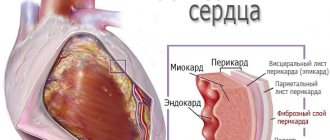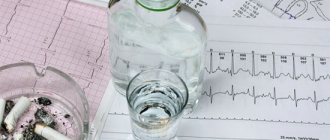Children whose severity of autonomic disorder is accompanied by increased fatigue, poor sleep and the presence of other additional problems suffer from such an ailment as vagotonia. Today we will determine what it is and how the disease manifests itself, because it is observed not only in children, but also in adults. We will also find out what the symptoms of this disease are and how to deal with it.
What is vagotonia?
From sections of school biology, every adult knows that the body has peripheral and central nervous systems. In parallel with them, the autonomic nervous system also works in the body. It regulates the functioning of all systems and internal organs. That is, it is responsible for the functioning of the heart, digestive tract, respiratory system, etc.
In turn, the autonomic nervous system has two divisions - sympathetic and parasympathetic. With a clear predominance of the parasympathetic system over the sympathetic one, a condition such as vagotonia (parasympathicotonia) develops. Pathology code according to ICD-10 is G90–G99.
Symptoms
Vagotonia is a pathological condition that negatively affects internal organs and systems, therefore the external signs of the disease are divided into several syndromes.
The cardiac group of clinical manifestations includes:
- bradycardia or slow heart rate;
- decreased blood tone or hypotension;
- pain and discomfort in the heart area;
- freezing in the chest.
Symptoms of changes in respiratory function:
- shortness of breath similar to that that begins during asthma attacks;
- weak breathing;
- feeling of suffocation;
- bouts of severe, painful dry cough.
Disturbances in the functioning of the digestive system are indicated by:
- lump in the throat;
- violation of the swallowing process;
- loss of appetite, up to complete aversion to food;
- bowel movement disorder;
- belching and heartburn;
- non-localized pain in the abdomen and chest;
- the appearance of a characteristic rumbling in the stomach.
Problems with brain function are expressed by the following symptoms:
- intense headaches;
- weakness and decreased performance;
- drowsiness during the day and insomnia at night;
- episodic panic attacks;
- poor concentration;
- decreased mental activity;
- tendency to apathy, depression and hypochondria;
- the feeling that everything that is happening around is unreal.
Vestibular disorders include severe dizziness and fainting.
In some cases, symptoms are supplemented by the following signs:
- poor tolerance to heat and cold;
- chilliness;
- increased sweating;
- temperature fluctuations;
- severe skin itching;
- tendency to allergies;
- causeless runny nose;
- weight gain due to lack of appetite;
- weather dependence.
Vagotonia in children has the following symptoms:
- pallor or cyanosis of peripheral parts of the body;
- swelling;
- frequent allergic reactions;
- secretion of a large amount of sweat;
- problems with sleep and behavior;
- shortness of breath and chilliness;
- poor appetite and nausea;
- spasms in the esophagus, pharynx and abdomen;
- defecation disorder;
- frequent regurgitation;
- headache;
- anxiety and inattention;
- obesity.
Symptoms of this phenomenon
Signs of vagotonia manifest themselves differently in an adult and in a child. Doctors identify several groups of signs in which certain symptoms of the vagotonic type of VSD are expressed:
- Vestibular signs. The patient experiences frequent dizziness, fainting, and intolerance to heights or open spaces.
- Cardiac signs. In this case, the patient experiences a disorder of the heart and cardiovascular system. In particular, this is a predominant low blood pressure, bradycardia, extrasystole, and a frequent feeling of pressure behind the sternum.
- Digestive symptoms. The patient exhibits all the signs of a gastrointestinal disorder. There are no major diseases as such in this case. But a person may experience decreased appetite, persistent heartburn, nausea, or a feeling of a lump in the throat.
- Respiratory signs. The patient suffers from shortness of breath, asthmatic attacks, dry cough, respiratory arrhythmia, and a feeling of lack of air.
- Syndrome of impaired cerebral circulation. Here a person experiences decreased concentration, frequent headaches, depression and apathy, and drowsiness.
As for the manifestations of VSD of the vagotonic type in children, most often a child with vagotropic syndrome has pale, almost bluish skin, swelling on the face, allergic reactions and increased sweating.
Complications of the disease
An advanced form of autonomic dysfunction, especially if the course of the disease is accompanied by vagoinsular crises, contributes to the development of mental disorders and severe forms of depression. Periodic decreases in blood pressure lead to the occurrence of cholelithiasis and the development of encephalopathy. Patients suffering from vagotonia have an increased risk of ischemic stroke. Therefore, it is necessary to remember that vagotonia in adults is a disease that requires complex treatment using serious drug therapy and various modern non-drug methods.
Causes of vagotonia
The pathogenesis of the development of vegetative dystonia is different for each person. Here we can rather name not the direct causes of the development of pathology, but the factors that provoke its development. These are:
- frequent and severe emotional stress;
- traumatic brain injuries;
- diseases of the gastrointestinal tract;
- genetics;
- constant intellectual load;
- increased emotionality;
- frequent viral infections;
- presence of chronic diseases.
Important:
In some cases, the development of vegetative-vascular dystonia of the vagotonic type is detected in people who have changed climate. When moving from one climate zone to another, there is a disruption in the functioning of the autonomic nervous system. She cannot cope with the restructuring of the body to the new climate.
Prevention and prognosis
To prevent an adult or child from being disturbed by the symptoms of vagotonia, it is worth following these simple preventive recommendations:
- maintaining a healthy and moderately active lifestyle;
- proper and healthy nutrition;
- ensuring adequate sleep;
- prevention of both mental and physical exhaustion;
- avoiding traumatic brain injuries;
- complete treatment of any chronic diseases;
- Regular visits to all clinicians during preventive examinations.
This disease often has a favorable prognosis, but in the absence of therapy, the possibility of developing complications such as angina pectoris, cholelithiasis, mental retardation, chronic depression and stroke cannot be ruled out.
Diagnostics
Doctors themselves call VSD of the vagotonic type a diagnosis of exclusion. That is, a patient who comes to the clinic is fully examined for various diseases. However, none of the pathologies are clearly identified. In this case, doctors diagnose “VSD of the vagotonic type.” During diagnosis, the patient undergoes a number of studies depending on the primary complaints:
- Cardiac signs. The heart is examined using ECG (electrocardiography) and ultrasound (echocardiography).
- Gastrointestinal symptoms. Ultrasound of the gastrointestinal tract.
- Brain disorders. CT or MRI of the brain.
- Respiratory signs. X-ray of the chest organs.
In addition, the patient undergoes a general and biochemical blood test, a general urine test and stool test for coprogram.
Treatment of vagotonia
Treatment of SVD (vegetative dystonia syndrome) begins with organizing a correct and healthy lifestyle. First of all, you need to reconsider your diet. The diet should be dominated by lactic acid products and plant foods. It is advisable to give up alcohol and smoking. Bad habits significantly disrupt the functioning of blood vessels, which means that blood flow in the body is also disrupted. All organs and systems receive less nutrition due to vascular dysfunction.
SVD therapy also involves regular exercise. For vegetative-vascular dystonia, jogging, swimming, cycling, yoga, and breathing exercises are recommended. Regular physical activity improves the health of the body as a whole and improves the functioning of the autonomic nervous system.
If the organization of the daily routine and nutrition does not stabilize the patient’s condition, then they switch to drug therapy. The following medications are prescribed:
- Sedatives based on motherwort, valerian, sage. It is advisable to take such drugs in courses.
- Nootropics. Drugs that help enhance the nutrition of nerve cells. Nootropics significantly accelerate metabolic processes in all tissues of the body. Among the drugs in this category, Piracetam, Glycine, etc. are prescribed.
- Hypotonic drugs. Prescribed for constant low blood pressure and bradycardia. Topical tinctures are ginseng and eleutherococcus, caffeine.
- Diuretics. Prescribed if the patient has high intracranial pressure.
- Tranquilizers and antidepressants. Prescribed if the patient has severe panic attacks, depression, apathy, anxiety or insomnia.
- B vitamins, vitamin C, antioxidants and magnesium preparations. All of them improve metabolic processes in the body and help normalize the patient’s condition.
Thus, vagotonia itself is not a disease. But if it is left unattended, sooner or later the main symptom complex risks developing into a chronic disease. Therefore, supportive therapy is extremely important for a patient with vagotonia.
Therapy with drugs
We have already found out how vagotonia manifests itself, what it is and how to treat this disease without the use of drugs. However, in case of serious and severe conditions of the patient, specialists prescribe drug therapy. Often these are drugs with a sedative effect, antidepressants with vitamin complexes, restoratives and anti-anxiety drugs. Often the doctor prescribes treatment with herbal medicine tablets. Children with increased excitability and anxiety are recommended to drink herbal infusions: sage, hawthorn, valerian, St. John's wort. This herbal complex has a sedative effect. The course of treatment is usually long - from 3 to 12 months.
In addition to tinctures and extracts, different types of tea can be used.
If the sedative effect is insufficient, anxiolytics and antipsychotics can be used in the treatment of vagotonia.
It is not so easy to completely get rid of this illness, but if a person strictly follows all the doctor’s recommendations, this will significantly alleviate his condition and give him peace of mind.
Now you know about such a disease as vagotonia. We also found out what it is and what its manifestations are. So, this disease can appear for several reasons, which are mainly associated with emotional overstrain, stress, and neuroses. Only an experienced specialist can diagnose “vagotonia,” so if the condition of a child or adult worsens, you should definitely see a doctor.











